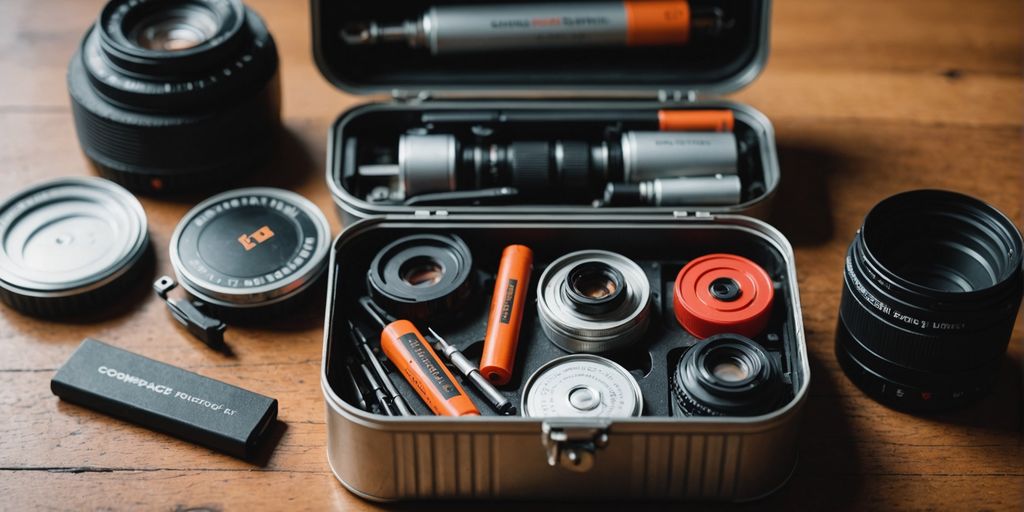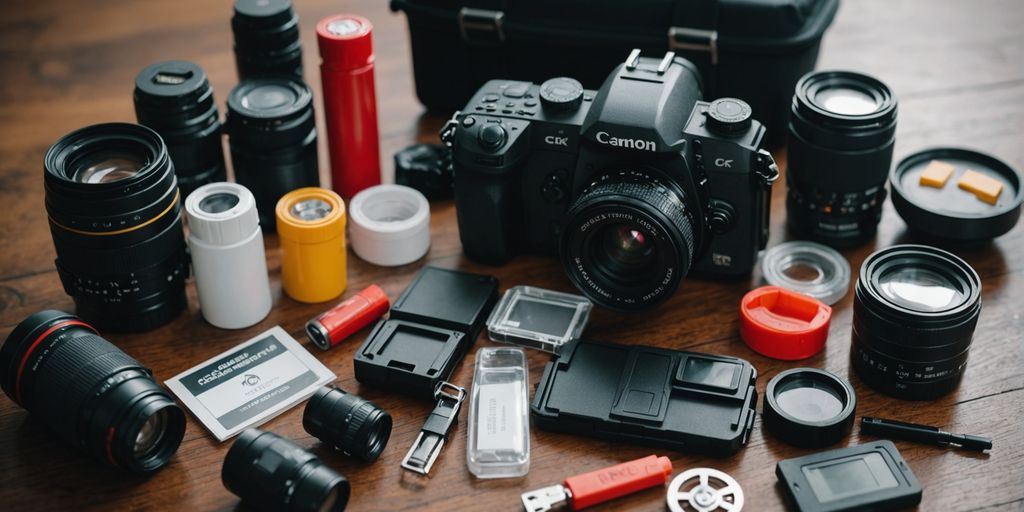Putting together a survival kit in a can might seem like a small task, but it can make a big difference in an emergency. Whether you’re hiking, camping, or just want to be prepared, having the right items in a compact container can help you stay safe and ready for anything. In this guide, we’ll walk you through everything you need to know to create your own mini survival kit.
Key Takeaways
- Start by planning your kit based on your needs and the situations you might face.
- Fire-starting tools are essential and should include matches, lighters, and tinder.
- Water purification is crucial; consider portable filters, tablets, and boiling methods.
- Effective signaling devices like whistles and mirrors can help you get noticed in an emergency.
- Regularly check and replenish your kit to ensure all items are in working order and up-to-date.
Planning Your Mini Survival Kit
Planning your mini survival kit is crucial to ensure you have the right tools and resources in case of emergencies. It involves assessing your needs, choosing the right container, and prioritizing essential items.
Essential Fire-Starting Tools
Having reliable fire-starting tools is crucial for warmth, cooking, and signaling. Options like lighters, matches, and ferro rods each have their pros and cons. Lighters are convenient but may run out of fuel, while matches are reliable but can get damp. Ferro rods are durable and work in various conditions. Don’t forget tinder like cotton balls, dryer lint, or wax paper to ignite your fire effectively.
Water Purification Methods
Access to clean water is vital for survival. Here are some effective methods to ensure your water is safe to drink in any survival scenario.
Effective Signaling Devices
In emergencies, being able to signal for help can be a lifesaver. Carrying essential signaling tools is crucial for emergency situations. Here are some important tools that you should include in your survival kit:
Navigation Tools for Survival
Staying oriented is crucial when you’re out in the wild. Having the right navigation tools can make all the difference between finding your way or getting lost. Here are some essential items to include in your survival kit:
Compasses
A reliable compass is a must-have. It helps you determine direction and stay on course. Make sure to practice using it before you need it in an emergency.
Maps
Always carry a detailed map of the area you are exploring. Knowing how to read a map is just as important as having one. Take some time to learn basic map-reading skills.
GPS Devices
Modern GPS devices can be a lifesaver. They provide accurate location data and can help you navigate unfamiliar terrain. However, remember that batteries can die, so don’t rely solely on electronic devices.
In an emergency, knowing where you are and where you’re heading can be a lifesaver. Always have multiple navigation tools at your disposal.
First Aid Supplies
A well-stocked first aid kit is a must-have in any survival kit. Include essentials like bandages, antiseptic wipes, and any medication specific to your needs. Tailoring your first aid supplies to address potential injuries in the wild ensures you’re prepared for medical emergencies.
Multi-Tools and Knives
Multi-tools and knives are essential for any survival kit. They can help with various tasks like building shelter, preparing food, and fixing things. Choosing the right tool can make a big difference in your survival chances. Here are some tips to help you pick the best ones for your needs.
Choosing the Right Multi-Tool
When picking a multi-tool, consider its size, functionality, and durability. A good multi-tool should have basic features like a knife, pliers, and screwdrivers. Some of the best survival multitools unfold to reveal a variety of tools, making them perfect for everyday carry and emergency kits.
Essential Knife Features
A survival knife should be sharp, durable, and easy to handle. Look for knives made from high-quality materials like stainless steel. The best outdoor-survival multi-tool often includes a sharp knife and other useful features like a saw and bottle opener.
Maintenance Tips
To keep your tools in good shape, clean them regularly and store them properly. Make sure to check for any signs of wear and tear. Regular maintenance will ensure your tools are ready when you need them most.
A well-maintained tool can be a lifesaver in an emergency. Always keep your multi-tools and knives in top condition.
Shelter and Warmth
Protecting yourself from the elements is crucial. Include items like [emergency blankets](https://edisastersystems.com/blogs/news/what-should-be-included-in-emergency-survival-kit-1-person-3-day-72-hour), tarps, and insulation materials in your kit. Ensuring you have shelter and warmth can prevent hypothermia and provide a safe haven in harsh conditions.
Food and Nutrition
Maintaining energy levels is vital for survival. Pack long-lasting, calorie-dense snacks to keep you fueled. Proper nutrition sustains your body during stressful situations. Include food that doesn’t require cooking and is easy to carry for on-the-go sustenance.
Non-Perishable Foods
Once you’ve packed your survival bag with all the other items you’ll need, it’s a good idea to fill any remaining space with food. You never know what you’ll be able to hunt or forage, so any food you can carry with you is vital. Prioritize calorie-dense, protein and fat-rich foods that don’t spoil easily, such as beef jerky, peanut butter, and nuts. Pack your bag with as much food as you can without making it too heavy or unwieldy.
Energy Bars
Energy bars are a convenient and compact source of nutrition. They are designed to provide a quick boost of energy and are easy to store. Look for bars that are high in calories and contain a good balance of carbohydrates, proteins, and fats. These bars can be a lifesaver in emergency situations.
Vitamins and Supplements
In a survival situation, it might be challenging to get all the nutrients your body needs from food alone. Including vitamins and supplements in your kit can help fill any nutritional gaps. Consider packing a multivitamin to ensure you get a broad range of essential nutrients. This can be especially important if your diet becomes limited to a few types of food.
Proper nutrition is not just about staying full; it’s about keeping your body strong and ready to face any challenges that come your way.
Customizing Your Kit
When it comes to personalizing your mini survival kit, it’s important to tailor it to your unique needs and the environments you frequent. Adapting the kit for specific activities or environmental conditions ensures you are prepared for potential challenges that may arise. Consider your individual preferences, skills, and potential scenarios you might encounter.
Personal Needs
Customization is key when assembling your mini survival kit. Whether you are an outdoor enthusiast, a frequent traveler, or preparing for emergencies, personalizing the contents will enhance your safety and comfort. For example, hikers may want to include compact tools for outdoor tasks, while urban dwellers may prioritize first aid supplies and communication devices.
Specialized Tools
Depending on your activities, you might need specialized tools. For instance, if you often go camping, you might want to include a small fishing kit or a portable stove. On the other hand, if you live in an area prone to natural disasters, adding items like a multi-tool or an emergency radio can be crucial.
Comfort Items
Don’t forget to add a few comfort items to your kit. These can be small things that make a big difference in stressful situations. Items like a favorite snack, a small book, or even a tiny toy can provide a sense of normalcy and comfort during emergencies.
By customizing your mini survival kit to meet your specific needs and regularly replenishing and maintaining its contents, you can be better prepared for unforeseen circumstances. Remember, a well-adapted kit can be a lifeline in emergencies and provide peace of mind in various situations.
Replenishing and Maintaining Your Kit
Keeping your survival kit in top shape is crucial. Regularly checking expiration dates and replacing perishable items ensures your kit is always ready. Make sure food, water, and medications are up to date so they work when you need them.
Regular Inspections
Inspect your kit at least twice a year. Look for expired items and replace them. Check that all tools and supplies are in good condition. This way, you can be sure your kit is always ready for an emergency.
Replacing Used Items
After using any item from your kit, replace it as soon as possible. This keeps your kit fully stocked and ready for the next time you need it. Don’t forget to check the expiration dates on new items before adding them to your kit.
Updating Seasonal Items
Adjust your kit based on the season. In winter, add items like hand warmers and extra blankets. In summer, include sunscreen and extra water. This ensures your kit is tailored to the current conditions and potential risks.
Conclusion
Putting together a survival kit in a can is more than just a fun project—it’s a step towards being prepared for unexpected situations. By carefully selecting and organizing your items, you ensure that you have the tools needed to stay safe and comfortable in emergencies. Remember, the best survival kit is one that fits your personal needs and the challenges you might face. Keep your kit updated and practice using the items inside. This way, you’ll be ready for anything that comes your way. Happy adventuring!


